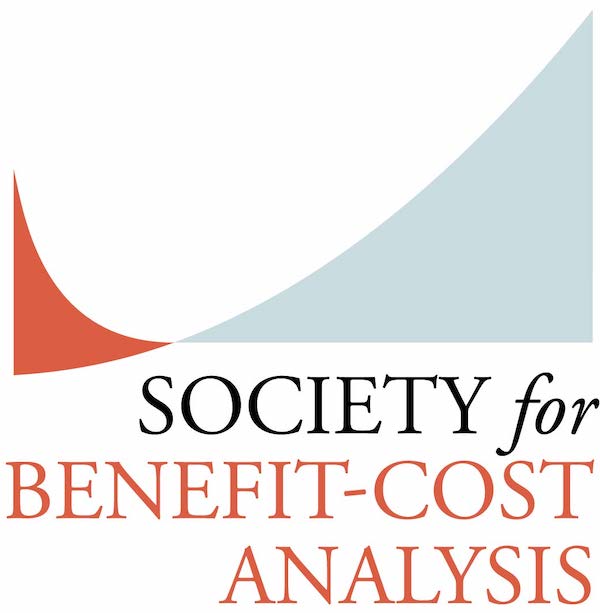On Balance: Ethics and Benefit-Cost Analysis (A Special Issue of the Journal of Benefit-Cost Analysis)
 The views presented in On Balance are those of the authors and do not represent the views of the Society, its Board, or its members.
The views presented in On Balance are those of the authors and do not represent the views of the Society, its Board, or its members.
The idea that decisions should be based on careful evaluation of the positive and negative impacts of alternative policies has enormous appeal, as demonstrated by the extensive use of benefit-cost analysis around the world. However, as conventionally implemented, benefit-cost analysis is based on strong normative assumptions. To measure individual wellbeing, it relies on individuals’ willingness to exchange their own income for the outcomes they themselves experience. To measure societal welfare, it relies on simple aggregation of these values across individuals. Although many alternatives have been proposed, they are not as well-developed nor widely used, and their normative dimensions have not necessarily been thoroughly explored.
To address these concerns, the Brocher Foundation hosted a 2022 Summer Academy, “Healthy, Wealthy, and Wise - The Ethics of Health Valuation,” selected by the Foundation’s Scientific Committee and organized by Lisa Robinson, Nir Eyal, Samia Hurst, and Daniel Wikler. As indicated in the program (which includes links to related readings), participants explored multiple dimensions of several alternatives to the conventional approach. Examples include measures of subjective well-being (“happiness”), equivalent income, and healthy life years, as well as social welfare functions. Variants include those that assign extra weight to benefiting the very young, or the poor, the unhealthy, or the otherwise disadvantaged.

 The
The The views presented in On Balance are those of the authors and do not represent the views of the Society, its Board, or its members.
The views presented in On Balance are those of the authors and do not represent the views of the Society, its Board, or its members. The views presented in On Balance are those of the authors and do not represent the views of the Society, its Board, or its members.
The views presented in On Balance are those of the authors and do not represent the views of the Society, its Board, or its members. The views presented in On Balance are those of the authors and do not represent the views of the Society, its Board, or its members.
The views presented in On Balance are those of the authors and do not represent the views of the Society, its Board, or its members.
 This is the last in a series of four blogs featuring key excerpts from the writings of our founder and past president, Richard Zerbe. His insights shaped the foundation of our association and remain relevant to today’s challenges. We hope these selections offer valuable perspectives to all members.
This is the last in a series of four blogs featuring key excerpts from the writings of our founder and past president, Richard Zerbe. His insights shaped the foundation of our association and remain relevant to today’s challenges. We hope these selections offer valuable perspectives to all members. The new White House “Frontiers” report,
The new White House “Frontiers” report,  The 2024 CBA Forum, held by The Economic Society of Australia New South Wales (ESANSW) earlier this year, brought together some of Australia's brightest minds in economic analysis, policy evaluation, and decision-making. The presentations - a mix of keynotes, panel discussions, and case studies - provided updates on state and national guidelines together with sessions on: Health, Justice, Water, Transport, Environment, Energy, First Nations and Carbon values.
The 2024 CBA Forum, held by The Economic Society of Australia New South Wales (ESANSW) earlier this year, brought together some of Australia's brightest minds in economic analysis, policy evaluation, and decision-making. The presentations - a mix of keynotes, panel discussions, and case studies - provided updates on state and national guidelines together with sessions on: Health, Justice, Water, Transport, Environment, Energy, First Nations and Carbon values. As a community of practice, we have the opportunity and even the responsibility to provide input during comment periods for federal and state agencies rule making prior to becoming entrenched in agency policy and application tools. One of these opportunities is currently open in the Federal Register for the US Army Corps of Engineers. The Army has broad responsibility and authority to build, maintain, enhance, and manage flood protection and reservoir projects across the country. The Army has been using a form of benefits exceeding costs test since the introduction of their first projects in the early 1900’s. The 2020 Water Resources Development Act instigated a re-evaluation of what is included in the army’s efficiency analysis and references many of the issues addressed at the last several SBCA conferences. Social and environmental costs are being discussed and how these and other concept can and should be quantified, qualified, and considered in alternatives analysis and final funding processes. This (SBCA) community of practice’s expertise on these topics, as well as the technical mechanics of BCA, valuation methods, and social welfare optimization make each of you a valuable contributor for the army as they collect comments and information to help them formulate practices and rules. Please consider reviewing the current solicitation for comments to ensure, those that know and do, are providing input, and that as a community we are helping guide the framework of the ecosystem within which many, with less experience and training, will be asked to participate on the project level.
As a community of practice, we have the opportunity and even the responsibility to provide input during comment periods for federal and state agencies rule making prior to becoming entrenched in agency policy and application tools. One of these opportunities is currently open in the Federal Register for the US Army Corps of Engineers. The Army has broad responsibility and authority to build, maintain, enhance, and manage flood protection and reservoir projects across the country. The Army has been using a form of benefits exceeding costs test since the introduction of their first projects in the early 1900’s. The 2020 Water Resources Development Act instigated a re-evaluation of what is included in the army’s efficiency analysis and references many of the issues addressed at the last several SBCA conferences. Social and environmental costs are being discussed and how these and other concept can and should be quantified, qualified, and considered in alternatives analysis and final funding processes. This (SBCA) community of practice’s expertise on these topics, as well as the technical mechanics of BCA, valuation methods, and social welfare optimization make each of you a valuable contributor for the army as they collect comments and information to help them formulate practices and rules. Please consider reviewing the current solicitation for comments to ensure, those that know and do, are providing input, and that as a community we are helping guide the framework of the ecosystem within which many, with less experience and training, will be asked to participate on the project level. The proposed revisions to Circular A-4 recently put forward by the Office of Information and Regulatory Affairs include guidance on applying what are referred to as "distributional weights." Costs and benefits to households and individuals with lower income are multiplied by a number greater than one, while those to households and individuals with higher income are multiplied by a number less than one. In the public comments on the proposed revisions, a number of criticisms of distributional weighting have been put forth, including:
The proposed revisions to Circular A-4 recently put forward by the Office of Information and Regulatory Affairs include guidance on applying what are referred to as "distributional weights." Costs and benefits to households and individuals with lower income are multiplied by a number greater than one, while those to households and individuals with higher income are multiplied by a number less than one. In the public comments on the proposed revisions, a number of criticisms of distributional weighting have been put forth, including: